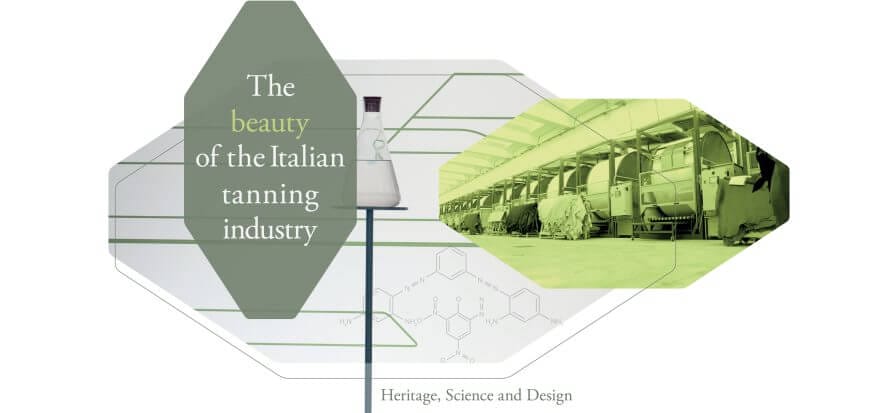“The Beauty of the Italian Tanning Industry is a project that confronts the public with the possibility of shedding light on the most beautiful leather in the world and those who produce it: Italian tannery”. These are the words of Fulvia Bacchi, General Manager of UNIC – Italian Tanneries (a member association of Confindustria Moda). They tell with concise precision the sense and objective of the exhibition concept that, on September 20-22, will be hosted within Lineapelle 100. A project that recounts the excellence of Italian tanning and its green power in the light of three key words, which represent its subtitle: heritage, science, design. And which underpins its model of absolute circularity.
Beauty and green power of Italian tanning
“The exhibition concept,” UNIC explains, “uses a didactic and at the same time emotional approach to retrace the path of leather from when it enters, raw or semi-finished, into an Italian tannery and comes out transformed into a material with very high added value”. A material “of incredible productive, stylistic, sustainable, futuristic excellence”. Hence, “the primary objective of The Beauty of the Italian Tanning Industry is to communicate what can be defined as the “beauty” of a production model to a target that is absolutely transversal, and not focused on insiders”. We speak of “beauty” because tanning “sums up in itself tradition and craftsmanship, science and technology, creativity and design”.
Experiencing the process
The exhibition project recounts “in a stimulating and novel way, every aspect of the leather material, its production cycle and its constantly improving green approach”. Curated and designed by Navone Associati, the exhibition “debuts at Lineapelle 100, and will then be set up on other platforms and in other locations. The set-up is configured as a compositional model operating on radial vectors”.
In other words: “Walls and corridors through which the public will move, physically going through the tanning process, discovering all the chemical and technological details, materially experiencing all the process phases”. Discovering, therefore, “how its waste is transformed, and coming to terms with the awareness (not shared by public opinion) that leather and the recovery of its process and product waste represent an example of historical and constantly evolving circularity”.
Absolute circularity
For example, UNIC concludes, leather and its waste “are present in jellies used in the food, pharmaceutical and cosmetics industries. In bio-stimulants and fertilisers that strengthen agriculture; in musical instruments, console games and sports equipment”. These latter examples are the protagonists (along with others) of the exhibition project promoted by UNIC. “Circular virtues for a product, leather, and an industry, the Italian tanning industry, that live on innovation and responsibility”.
Read also:











